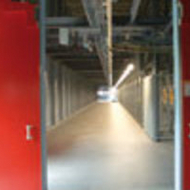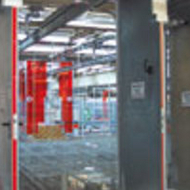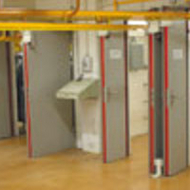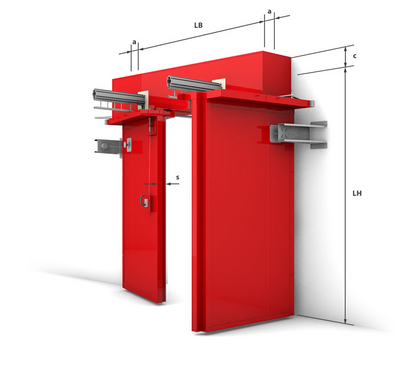
Product description
The particularly space-saving fire protection gate is designed as a double-leaf, swing-door closure. The two integrated, semi-circular collars encase the aluminium or steel rails passing through (including power rails) and seal them off. Thermal separation of the rail is not necessary. The gates can be opened manually and by motor. ECClos-D is suitable for continuous belt conveyors, roller conveyors and suspension chain conveyors, but primarily for electrical overhead tracks, circular conveyors and Power&Free systems.

Type | Fire protection closure as part of track-bound conveyor systems |
Closing direction | slewing horizontally |
Fire resistance | EI1 120 • tested according to DIN EN 1366 • classified according to DIN EN 13501-2 |
Closing cycles | C3 number of closing cycles 50,000 |
Re-opening | manual |
Conveyor system | Electric monorail conveyor • Circular conveyor • Power & Free systems • Continuous belt conveyor system • Continuous roller conveyor system • Continuous suspension chain conveyor |
Required wall quality | |
|---|---|
Masonry | d ≥ 200 mm |
Concrete | d ≥ 200 mm |
Aerated concrete | d ≥ 200 mm |
Assembly walls | d ≥ 160 mm |
Cladded steel construction | acc. to DIN 4102-4 |
Technical feasibility | |
|---|---|
LH | 1000 mm - 5000 mm |
LW | 600 mm - 3000 mm |




